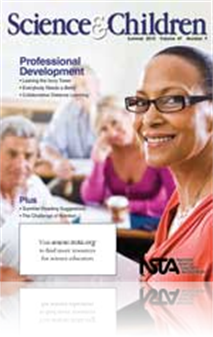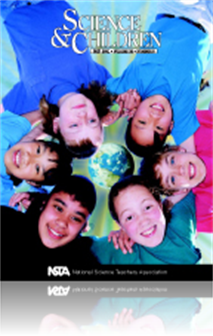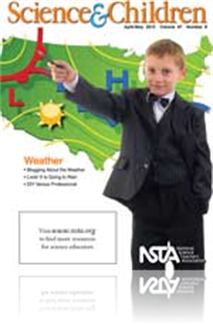All Science and Children resources
Journal Article
Every Day Science Calendar: August (2010)
This monthly feature contains facts and challenges for the science explorer....
Journal Article
Seven Principles of Highly Collaborative PD
Convening professionals—physically or virtually—is necessary but certainly not sufficient for meaningful collaboration and networking to occur. Professional development (PD) must be designed and carried out in ways that encourage a culture of sus...
Journal Article
Become part of a professional learning community by pairing up to exchange ideas and lesson plans. Professional development in real-life situations and collaborations with others is part of the National Science Education Standard A: Work together as ...
Journal Article
Science Shorts: The Challenge of Nutrition
You have no doubt seen it in your classrooms and heard it in the news: Childhood obesity is an epidemic in the United States. Obesity may predispose children to health issues later in their lifetime, including type 2 diabetes and heart disease. Weigh...
Journal Article
Science 101: What kind of professional development is best for teachers?
The simple answer to this question is that it depends on your needs. For elementary and middle school teachers, though, the author has found that a high percentage of teachers lack the proper background in science content to teach effectively. There ...
Journal Article
How to Create a Professional Learning Community
Devoting time to a professional learning community (PLC) can be frustrating or rewarding. The authors have experienced both of these outcomes and can share processes that may help make your PLC one that enriches your professional growth and improves ...
Journal Article
Guest Editorial: The Root of the Problem
By providing opportunities for in-depth exploration of content and engagement of educators in modeling the instructional process, we will be able to focus on the needed differentiation in the professional development (PD) of science educators, just a...
Journal Article
Children are fascinated with large bodies of water, such as lakes and oceans. They feel the wind on their faces and observe lake and ocean water as it moves in waves. But do they know what makes the air and water move? The following two investigation...
Journal Article
Weather, with its built-in atmospheric laboratory, is a natural source of inquiry. The ever-changing nature of weather provides a constant source of questions to investigate and connects to a multitude of physical science concepts. The question, “H...
Journal Article
Natural Resources: There Is a Season
You’ll gain plenty of weather resources from this month’s issue (temperature concepts, weather instruments, the water cycle/evaporation). You can use that information with these outdoor seasonal connections....
Journal Article
Teaching Through Trade Books: Cloud Watchers
Weather is a topic in science that is applicable to our lives on an everyday basis. The weather often determines what we wear, where we go, and what we do. This month’s column focuses on clouds and the part they play in determining our weather. In ...
Journal Article
Since the majority of the content standards related to weather focus on forecasting, elementary students often spend a lot of time studying cloud types, fronts, storms, and using a barometer to read air pressure. Although this allows students to “d...
Journal Article
The Early Years: Where Did the Water Go?
Everyday occurrences with evaporation are so ordinary that adults may not realize that children wonder about them and create explanations about what happens to water as wet objects dry. The process of evaporation is not visible, making it hard for yo...





